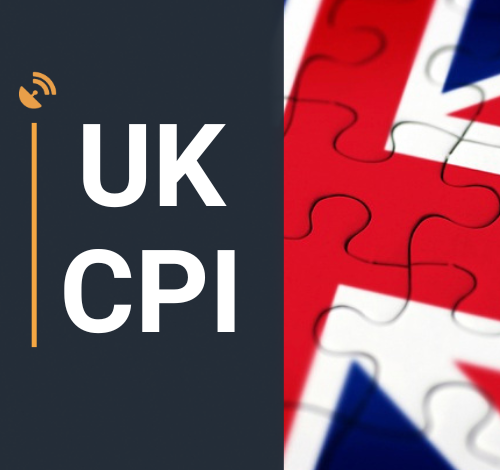UK CPI expected to rise more than 2% as services inflation remains high

- United Kingdom’s CPI is foreseen to tick higher in July to 2.3% YoY.
- The Bank of England acknowledged the battle against inflation is not done.
- The Pound Sterling advances against the US Dollar ahead of key data.
The United Kingdom (UK) will release the Consumer Price Index (CPI) for July on Wednesday, a high-impact macroeconomic event. The data, published by the Office for National Statistics (ONS), directly influences the Bank of England (BoE) monetary policy decision and, hence, the Sterling Pound (GBP).
When policymakers met at the end of July, the BoE trimmed the Bank Rate by 25 basis points (bps) to 5%, as inflation, as measured by the CPI, stood at 2% in May and June, meeting the central bank’s goal.
What to expect from the next UK inflation report?
The UK CPI is expected to have risen at an annual pace of 2.3% in July, above the preferred 2%. Core annual inflation, however, is foreseen at 3.4%, below the 3.5% posted in June.
Nevertheless, the figures are in line with what the central bank anticipated in its latest meeting. The Monetary Policy Committee (MPC) stated that “CPI inflation is expected to increase to around 2¾% in the second half of this year, as declines in energy prices last year fall out of the annual comparison, revealing more clearly the prevailing persistence of domestic inflationary pressures. Private sector regular average weekly earnings growth has fallen to 5.6% in the three months to May, and services consumer price inflation has declined to 5.7% in June.”
Even further, the meeting Minutes showed that the Committee “discussed developments in internationally traded goods prices, noting the presence of a range of risks that could be material for the UK inflation outlook.”
With that in mind, an uptick in inflation figures would not mean an imminent interest rate hike, as policymakers are well aware the road is still bumpy. On the other hand, a rate cut is also out of the picture for now: “Monetary policy will need to continue to remain restrictive for sufficiently long until the risks to inflation returning sustainably to the 2% target in the medium term have dissipated further.”
The main focus will be on services inflation, which held steady at 5.7% year-over-year (YoY) in June after rising by more than expected for two months in a row. Easing services inflation will be read as good news and seen as anticipation of a potential rate cut when the BoE meets in November.
When will the UK Consumer Price Index report be released and how could it affect GBP/USD?
In the present scenario, upcoming UK CPI data will likely be taken with a pinch of salt. As said, the expected increase in annual inflation figures won’t twist policymakers’ hands but instead fall within expectations. Higher-than-expected figures, however, may spur speculation about a more hawkish BoE and a potential delay for the next interest rate cut to 2025. In such a case, the Pound Sterling may edge higher against its major rivals.
The opposite case is also valid: a lower-than-anticipated outcome in CPI figures will boost the odds for a soon-to-come rate cut and weigh on the British currency. There is still another – quite unlikely – scenario: Annual CPI falling below 2%. This will push speculative interest into pricing in a sooner-to-come rate cut and could result in GBP plummeting.
Valeria Bednarik, FXStreet’s Chief Analyst, analyzes the possible GBP/USD scenarios following the release of the UK CPI figures: “The GBP/USD pair fluctuates around the 1.2800 mark ahead of the announcement, as demand for the US Dollar receded following a week dominated by risk-aversion. The pair bottomed at 1.2664 last week, a potential bearish target should the annual CPI ease to below 2%. On the contrary, a reading above 2.5% may push GBP/USD towards the 1.2900 region.”
Technically speaking, Bednarik adds: “The bullish potential seems limited, according to the daily chart. Despite advancing, technical indicators remain within negative levels. Furthermore, the positive momentum seems to be easing ahead of the announcement. At the same time, the pair develops below a firmly bearish 20 Simple Moving Average (SMA), currently providing dynamic resistance at around 1.2830. Finally, the 100 and 200 SMAs stand directionless below the current level, suggesting buying interest is not firm enough to put the pair on a continued bullish path.”
Inflation FAQs
Inflation measures the rise in the price of a representative basket of goods and services. Headline inflation is usually expressed as a percentage change on a month-on-month (MoM) and year-on-year (YoY) basis. Core inflation excludes more volatile elements such as food and fuel which can fluctuate because of geopolitical and seasonal factors. Core inflation is the figure economists focus on and is the level targeted by central banks, which are mandated to keep inflation at a manageable level, usually around 2%.
The Consumer Price Index (CPI) measures the change in prices of a basket of goods and services over a period of time. It is usually expressed as a percentage change on a month-on-month (MoM) and year-on-year (YoY) basis. Core CPI is the figure targeted by central banks as it excludes volatile food and fuel inputs. When Core CPI rises above 2% it usually results in higher interest rates and vice versa when it falls below 2%. Since higher interest rates are positive for a currency, higher inflation usually results in a stronger currency. The opposite is true when inflation falls.
Although it may seem counter-intuitive, high inflation in a country pushes up the value of its currency and vice versa for lower inflation. This is because the central bank will normally raise interest rates to combat the higher inflation, which attract more global capital inflows from investors looking for a lucrative place to park their money.
Formerly, Gold was the asset investors turned to in times of high inflation because it preserved its value, and whilst investors will often still buy Gold for its safe-haven properties in times of extreme market turmoil, this is not the case most of the time. This is because when inflation is high, central banks will put up interest rates to combat it. Higher interest rates are negative for Gold because they increase the opportunity-cost of holding Gold vis-a-vis an interest-bearing asset or placing the money in a cash deposit account. On the flipside, lower inflation tends to be positive for Gold as it brings interest rates down, making the bright metal a more viable investment alternative.
Economic Indicator
Core Consumer Price Index (YoY)
The United Kingdom (UK) Core Consumer Price Index (CPI), released by the Office for National Statistics on a monthly basis, is a measure of consumer price inflation – the rate at which the prices of goods and services bought by households rise or fall – produced to international standards. The YoY reading compares prices in the reference month to a year earlier. Core CPI excludes the volatile components of food, energy, alcohol and tobacco. The Core CPI is a key indicator to measure inflation and changes in purchasing trends. Generally, a high reading is seen as bullish for the Pound Sterling (GBP), while a low reading is seen as bearish.
The Bank of England is tasked with keeping inflation, as measured by the headline Consumer Price Index (CPI) at around 2%, giving the monthly release its importance. An increase in inflation implies a quicker and sooner increase of interest rates or the reduction of bond-buying by the BOE, which means squeezing the supply of pounds. Conversely, a drop in the pace of price rises indicates looser monetary policy. A higher-than-expected result tends to be GBP bullish.
Information on these pages contains forward-looking statements that involve risks and uncertainties. Markets and instruments profiled on this page are for informational purposes only and should not in any way come across as a recommendation to buy or sell in these assets. You should do your own thorough research before making any investment decisions. FXStreet does not in any way guarantee that this information is free from mistakes, errors, or material misstatements. It also does not guarantee that this information is of a timely nature. Investing in Open Markets involves a great deal of risk, including the loss of all or a portion of your investment, as well as emotional distress. All risks, losses and costs associated with investing, including total loss of principal, are your responsibility. The views and opinions expressed in this article are those of the authors and do not necessarily reflect the official policy or position of FXStreet nor its advertisers. The author will not be held responsible for information that is found at the end of links posted on this page.
If not otherwise explicitly mentioned in the body of the article, at the time of writing, the author has no position in any stock mentioned in this article and no business relationship with any company mentioned. The author has not received compensation for writing this article, other than from FXStreet.
FXStreet and the author do not provide personalized recommendations. The author makes no representations as to the accuracy, completeness, or suitability of this information. FXStreet and the author will not be liable for any errors, omissions or any losses, injuries or damages arising from this information and its display or use. Errors and omissions excepted.
The author and FXStreet are not registered investment advisors and nothing in this article is intended to be investment advice.



